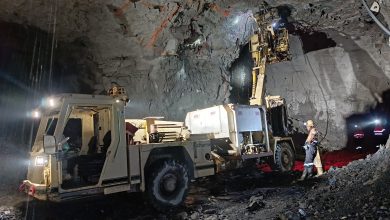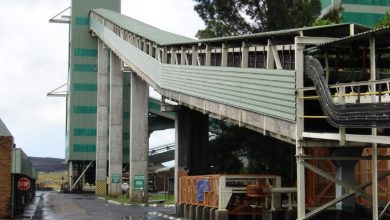
The need for social and labour plans in all sectors
By Ori Phayane, Chief Legal & Compliance Officer for United Manganese of Kalahari
Mining, until now, has been the sector in South Africa where Social and Labour Plans are a legal requirement. These plans are designed to ensure that while companies take value out of the ground, as is the case for miners, they also leave something of value behind. SLPs compel mining firms to engage with communities, plan for life beyond the lifespan of a mine, and be held accountable for what they promise. It is perhaps time that other sectors, particularly those that require licences to operate, look at the model more closely. Many of these businesses have an impact on communities just as significant as mining and could benefit from exploring this approach.
If adopted more broadly, Social and Labour Plans could help rebalance the economy. Entrepreneurship in underdeveloped areas would be promoted; local jobs would be created and the exodus of young people to already strained cities could slow down. At the same time rural communities would be strengthened and resilience built. The economic multipliers are powerful. When procurement and enterprise development opportunities are seeded locally, suppliers grow, create jobs of their own and often expand into regional and even international markets. That cycle of opportunity has been one of the most notable legacies of SLPs in mining and it is an idea that could be transplanted into almost any other industry.
The design of SLPs is with purpose and specific goals. They are negotiated with host communities and municipalities, signed off at board level and monitored by regulators, unions and community members. Progress is reported on every year and where companies fall short, they are pressed to deliver. It is not a box ticking exercise. An SLP is a legal obligation.
Corporate South Africa must revisit their impetus to invest. Service delivery failures continue to drive protest and unrest that disrupts business. A structured system such as an SLP could channel even a small percentage of funds into stabilising operating environments in the economy. Improvements in local infrastructure, healthcare and education reduce volatility and create the kind of social cohesion that benefits both companies and communities.
The system also promotes accountability. Because SLPs are approved at the highest levels of the company, oversight becomes a boardroom issue. They are reported to committees often chaired by directors. Communities and regulators monitor implementation closely and call out failings. The effect is that governance and ethical oversight are embedded at the top tiers of company operations. This is far more tangible than vague ESG statements that make bold promises but often deliver little in practice. Other regulated sectors could adopt the same approach and strengthen their own governance structures at the same time.
Mining also must contemplate all strategic actions with an end date in mind. Ore bodies run out, operations are scaled back, and mines eventually close. Companies are directed to plan for what remains behind. SLPs therefore focus on creating sustainable economic activity that outlives the mine itself. Local enterprises, youth and women led businesses, procurement opportunities, skills training and adult literacy programmes all form part of the mix. The principle is to create self-reliance and opportunity that survives after the company has left. Most other industries do not plan this way. They think in quarters and in headline earnings. The result is reputational risk and communities that feel neglected. The mining model shows that it can be done differently.
South Africa has a vibrant and sometimes highly vocal, organised labour sector. In mining, SLPs include commitments to human resources development. Training, health and safety, career progression, mentorship, employment equity and even retrenchment planning are all part of the framework. Meeting those commitments reduces disputes, builds morale and protects reputations. Other sectors would do well to look at this. Making clear, enforceable commitments to workforce development would reduce conflict and improve trust between employees, unions, regulators and communities. It is also cheaper to invest in people upfront than to repair relations after disputes have damaged the brand.
Urban based companies in other industries would arguably have an easier task than miners do. Mining companies often operate in remote rural areas with little infrastructure and must build trust from scratch. In urban or industrial hubs, literacy and employment levels are higher and opportunities broader. If SLP style commitments were introduced there, the gains would be faster. Consultation with communities is central to the model, ensuring that projects reflect real needs rather than what a boardroom assumes will be welcome. This builds ownership and transforms relationships between companies and the people living around them.
Investors are also paying closer attention to the broader notion of company community investment. ESG has moved from being a fashionable acronym to a serious consideration in capital allocation. Where once the focus was mainly on emissions, now social and governance considerations carry equal weight. Companies that can demonstrate measurable, meaningful commitments to employees and communities are more likely to secure investment. They also attract better talent. A company known for benefiting not just shareholders but also its workforce and the community around it is a more appealing place to work. Those that ignore the social side of ESG risk being left behind.
South Africa faces a social and economic crisis that government alone cannot fix. Service delivery is not always up to scratch, unemployment is high, and social unrest is never far from the surface. Companies cannot insulate themselves from this reality. Social and Labour Plans are not perfect, but they have shown that regulated and enforceable commitments to community development, workforce upliftment and good governance can deliver results. Other sectors such as energy, logistics, financial services, large scale manufacturing and telecommunications could adapt the framework to their environments. In doing so they could strengthen their own prospects and help address the systemic challenges that could contribute to forward momentum for the country.






